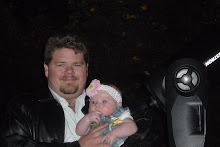A book on Astronomy...Check
An optical aid (binoculars and/or a telescope)...Check
A clear night...Check
Now what...
So much hype is put into to gear and having the latest and greatest stuff is what is necessary to having a good night under the stars. A lot of people and I do mean A LOT, buy a lot of expensive stuff and never really seem to comprehend all its benefits and get frustrated when the experience less than "stellar."
Well it appears the best way to combat this problem is to get out under the stars and start looking at things that are floating in the heavens. What usually happens very early on when someone adopts this first practice is that they look at the same five objects every night. Usually it is the the brightest of bright deep sky objects like M51, M57, M13, M27 (don't worry about the "M's" I will cover that sooner than later) or Saturn and the Moon. While each one of these objects are down right spectacular, they do get a little boring after a while. This tends to lead people into buying more expensive gear, thinking that more expensive eyepieces will make the view better, when in reality this leads to a vicious cycle of spending money on stuff you don't need.
To help out with the "Now What" problem keep these points in mind when you are under the stars.
- You are studying Astronomy so study it. If you are going to observe the same five objects every night then at least know everything there is to know about those objects. There is a wealth of interesting facts to these treasures so get to know them.
- I recommend reading up on the constellations, believe it or not the sky tells a story and many other stories take place that are not so apparent the Greeks who came up these constellations never had television so the sky was the next best thing..
- Pick a part of the sky and research it. Each part of the sky will tend to hold different kinds of objects. For example Sagittarius has a lot of star clusters and Virgo has a lot of galaxies. Why is that you suppose?
- Pull out a set of star charts, I am currently using the start charts out of Night Watch by Terrence Dickenson, and study a constellation and try to find everything in it, ie double starts, galaxies, nebulas, star clusters... and make notes on each object.
- Make note of object that are easily seen in the city so that when you get into a dark site you can either look at those same objects again or you can try to find those faint objects that you cannot see in the city.
- Lastly, sometimes getting out under the stars isn't everything. Try reading the instruction manual for your telescope, study the motions of the sky, figure out what degrees are. In other words GET THE BASICS DOWN.
Hopefully these are some tips that you can use to help alleviate the "Now What" syndrome. Remember the best gear for visual astronomy are you eyes. No telescope is going to fix that.

No comments:
Post a Comment